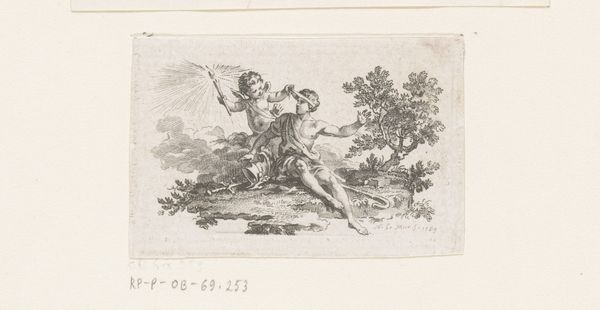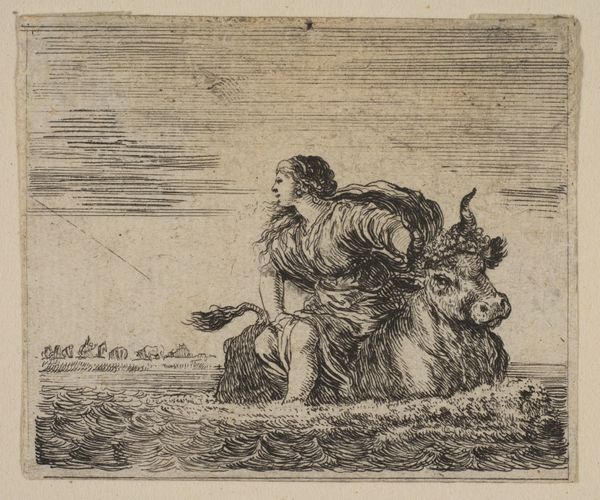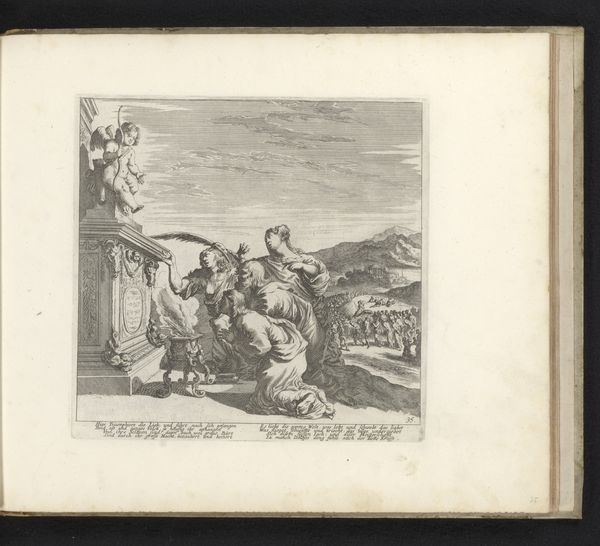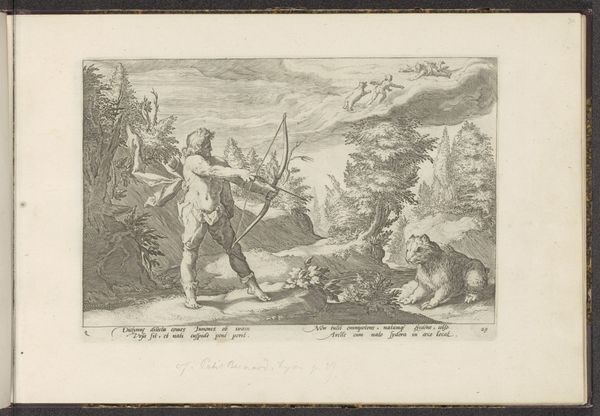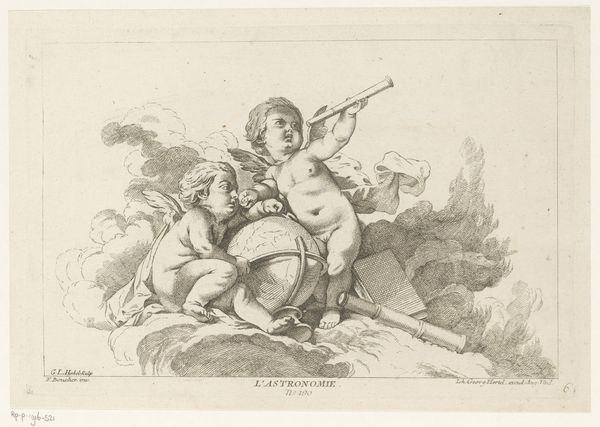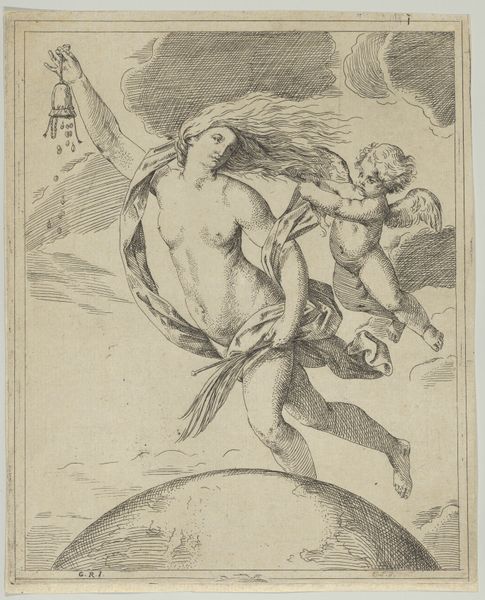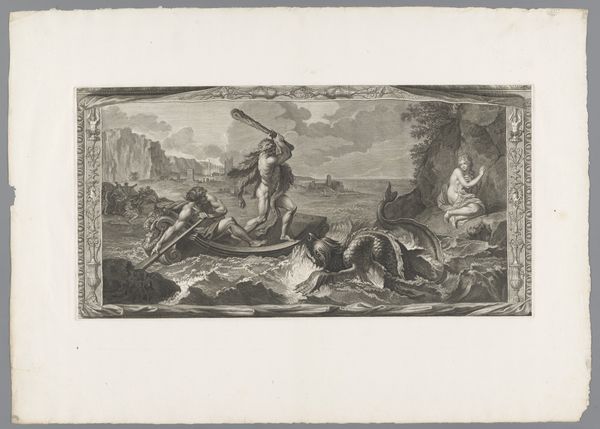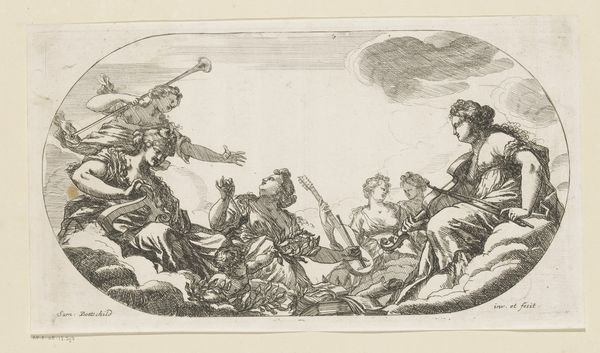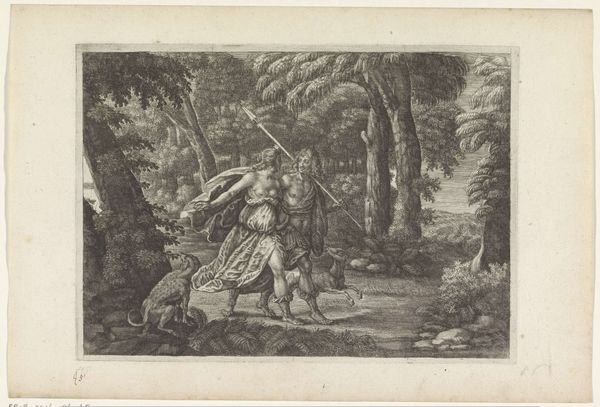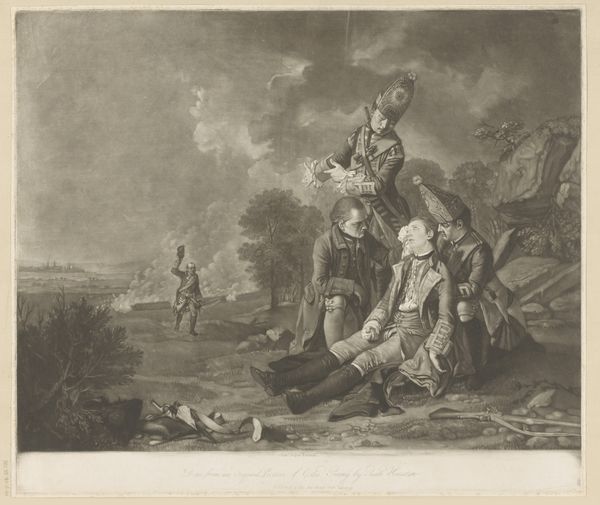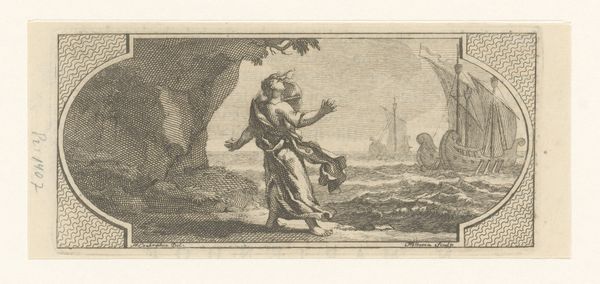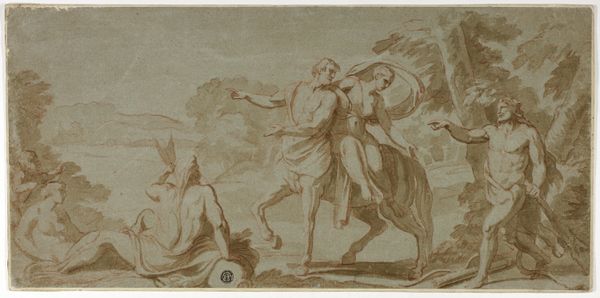
Young Clifford Finding the Body of his Father, from "L'Artiste" 1834
0:00
0:00
drawing, print
#
drawing
#
narrative-art
# print
#
death
#
landscape
#
figuration
#
romanticism
#
men
#
history-painting
Dimensions: Image: 8 3/4 x 6 3/16 in. (22.3 x 15.7 cm) Sheet: 10 5/16 x 8 1/16 in. (26.2 x 20.4 cm)
Copyright: Public Domain
Editor: So, this is "Young Clifford Finding the Body of his Father," a print by Eugène Delacroix from 1834. It definitely strikes a somber note, you know? The fallen bodies and bleak landscape really set the stage for…well, loss. What do you see in this piece, considering its focus on such heavy themes? Curator: What grabs my attention are the symbols of chivalry juxtaposed with the brutal reality of the battlefield. Notice the knightly attire – the armor, the sword discarded on the ground. They represent a code of honor, a societal ideal, starkly contrasted by the violence depicted. What emotional weight do you think Delacroix is trying to convey by depicting the immediate aftermath, the visceral moment of a son finding his father, rather than the battle itself? Editor: I guess it’s about making it personal? It’s not just about battles and politics; it’s about family and grief. Is he pulling from common imagery or symbols people would’ve recognized at the time? Curator: Precisely! Think about the artistic lineage Delacroix is working within. He's invoking classical mourning traditions – the Pietà comes to mind – but twisting them, setting them against this historically specific scene from Shakespeare's Henry VI. The visual language becomes a powerful comment on the cyclical nature of violence, of history repeating itself. The land even looks desolate. Do you see a potential connection here between nature and man's deeds? Editor: Yeah, the landscape mirrors the internal devastation. Seeing the ideals of honor fallen with the body definitely resonates. It adds layers of meaning. Curator: Indeed. Delacroix utilizes visual symbols, not just to tell a story, but to tap into our collective memory of loss and societal failings, reminding us that the cost of conflict extends far beyond the battlefield. Editor: I hadn't considered how much the symbols amplified the scene’s emotional impact! Curator: That's how symbols work, embedding themselves within our consciousness and reappearing across generations.
Comments
No comments
Be the first to comment and join the conversation on the ultimate creative platform.
